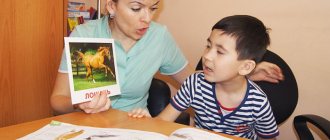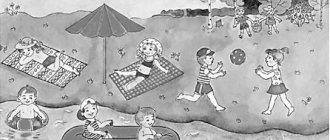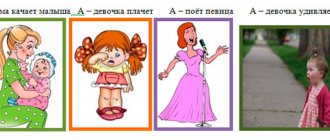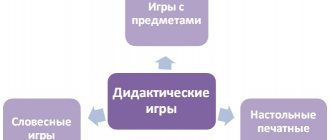Article:
Children who begin to learn writing sometimes encounter manifestations of dysgraphia.
It manifests itself already during the first attempts at writing in the form of gross errors. At first, parents assume that the problem is the child’s banal inattention, but experienced teachers will quickly distinguish a disorder called dysgraphia. This is a deviation in the formation of certain mental functions, in which minor problems with the speech apparatus are also observed. The child writes words in reverse and makes a huge number of grammatical errors. The handwriting is illegible. The defect manifests itself more as problems during writing, but it is associated with disruption of the functioning of some parts of the brain responsible for speech.
General information
Dysgraphia is a writing disorder in the form of systematic phonetic errors and incorrect spelling of letters. Such errors are permanent and are not related to knowledge of the grammatical rules of the Russian language.
Dictations or presentations for children with this disorder are replete with errors, which reduces self-esteem and interferes with learning, developing, and communicating with classmates. This problem cannot be solved on its own and requires the intervention of specialists, including psychotherapists, neurologists and others.
According to studies, dysgraphia in various stages is detected in 53% of second grade students, 37% of middle school students. Based on these data, we can conclude that this disorder is stable. Depending on the problems and symptoms, various types of dysgraphia are distinguished, also classified by severity.
Pathogenesis and mechanism of occurrence
Writing is a multi-level mechanism, the implementation of which involves different systems:
- speech motor;
- auditory;
- visual;
- motor.
They successively transform articulemes into the form of phonemes, the phoneme turns into a grapheme, and those into a kineme. To develop writing, a child must have a good level of oral speech. It is now known that the pathogenesis of dysgraphia is associated with incorrect or untimely lateralization of brain functions. These processes end approximately by 6-7 years, that is, by the beginning of school.
If there is a delay in lateralization and the simultaneous presence of left-handedness, disturbances occur in the cortical region. With dysgraphia, a child experiences incomplete development of perception, thinking, and memory. The emotional-volitional sphere of the child, visual analysis and other aspects of the child may suffer.
Causes of dysgraphia in children
Before answering the question “dysgraphia—what is it,” you need to understand its causes. This can happen for a variety of reasons:
- birth injuries;
- infectious diseases;
- genetic predisposition;
- neglected child rearing.
Dysgraphia is often accompanied by a number of concomitant diseases that have already been diagnosed in the child. This disorder primarily manifests itself in the incorrect spelling of letters and syllables. Patients with this diagnosis are not able to write correctly, as they have hearing and visual impairments. The child cannot properly process the information received, synthesize it, and analyze it.
Causes of dysgraphia in adults
The reasons for the imperfection of written speech in adults can be provoked by external and internal factors. The main causes of dysgraphia in adults are:
- brain injuries or surgical operations;
- brain tumors;
- some infectious diseases, such as meningococcus;
- inflammatory processes;
- stroke;
- social conditions;
- lack of oxygen in the blood (asphyxia).
Social factors may include pedagogical neglect, incorrect speech of people around the child, little communication between the child and other children and adults, and bilingualism.
A person with dysgraphia makes systematic errors when writing. They are stable in nature, and the person knows all the grammatical rules well.
The most basic reasons for development are insufficient functioning of speech and hearing (analyzers). The child cannot independently analyze speech and synthesize it.
Mastering written speech is directly related to the development of all aspects of speech function, therefore, children with mental retardation, developmental disabilities, phonemic underdevelopment, and sound pronunciation disorders are at risk for dysgraphia. That is why it is extremely important to undergo an examination by a speech therapist by school age and correct existing problems.
Teaching children to write without mistakes
1) Exercise “Proofreading”. For this exercise you need a book, boring and with a fairly large (not small) font. The student works every day for five (no more) minutes on the following task: crosses out the given letters in a continuous text. You need to start with one letter, for example, “a”. Then “o”, then the consonants with which there are problems, first they also need to be asked one at a time. After 5-6 days of such classes, we switch to two letters, one is crossed out, the other is underlined or circled. The letters should be “paired”, “similar” in the student’s mind. For example, as practice shows, most often difficulties arise with the pairs “p/t”, “p/r”, “m/l” (spelling similarity); “y/d”, “y/y”, “d/b” (in the latter case the child forgets whether the tail of the circle is pointing up or down), etc.
The pairs required for development can be established when viewing any text written by your child. After seeing the correction, ask what letter he wanted to write here. More often than not, everything is clear without explanation.
Attention! It’s better if the text is not read (that’s why the book needs to be boring). All attention must be concentrated on finding the given shape of a letter, one or two, and work only with them.
2) Exercise “Write out loud.” An extremely important and irreplaceable technique: everything that is written is spoken out loud by the writer at the time of writing and the way it is written, with underlining and highlighting weak parts.
That is, “Another O-din h-rez-you-cha-Y-but-important reception” (after all, in fact, we say something like “LOOKING FOR AN EMERGENCY IMPORTANT PREMIERE”). The example is simpler: “ON THE TABLE WAS A JUG WITH MILK” (a jug of malak melted on the steel).
By “weak beats” we mean sounds that, when pronounced in fluent speech, the speaker pays the least attention to. For vowel sounds, this is any unstressed position; for consonants, for example, a position at the end of a word, such as “zu*p”, or before a voiceless consonant, such as “lo*shka”. It is also important to clearly pronounce the end of the word, since for a dysgraphic person it is difficult to finish the word to the end, and often for this reason the habit of “putting sticks” is developed, i.e. add an indefinite number of squiggle sticks to the end of a word, which at a quick glance can be mistaken for letters. But the number of these squiggles and their quality do not correspond to the letters at the end of the word. It is important to determine whether your child has developed this habit. However, regardless of whether it exists or not, we get used to consistency and gradual pronunciation, we pronounce every word we write down!
3) “Take a closer look and figure it out” (punctuation for dysgraphics and not only).
Material for work - collections of dictations (with commas already added, and check that there are no typos).
Assignment: carefully reading, “photographing” the text, explain the placement of each punctuation mark out loud. It is better (for middle and older age) if the explanation sounds like this: “The comma between the adjective “clear” and the conjunction “and”, firstly, closes the participial phrase “...”, and secondly, separates the two parts of the complex sentence ( grammatical basics: the first “…”, the second “…”), connected by the conjunction “and”.
4) “Missing letters.”
When performing this exercise, it is suggested to use the hint text, where all the missing letters are in their places. The exercise develops attention and confidence in writing skills.
For example:
Of course, no matter what, what Lariosik __to the hall is going to eat. In no way __l__ch__e m__f__t b__t__ n__ st__ro__e Petliura in__el__ig__n__n__y ch__l__we__ in__ob__e, but d__en__lm__n, p__d__i__av__iy cheerful on s__m__es__t p__t you__ya__ and p__sy__a__shchi__ __el__g__a__we in __es__es __t tr__ s__ov__, in ch__st__o__ty... M__shi__nym small__lo__ and k__ro__i__om on__lu__sh__m about__az__m b__li s__aza__y and nay-tours Colt and Al__shin brau__ing .
5) Labyrinths.
Labyrinths are good for developing gross motor skills (movements of the hand and forearm), attention, and continuous line. Make sure your child changes the position of his hand, not the sheet of paper.
Dictations must be written!
- Extremely slow!
- The text is read in its entirety. You can ask what spelling/punctuation this text is based on. Most likely the child will refuse, will not be able to do this, so remember and lightly point out them yourself, find out whether the concepts of “unstressed vowels” and “participial/adverbial phrase” are known. Then the first sentence is dictated. Ask your child to name the number of commas in it and try to explain them. Do not insist, suggest, encourage the attempt to give the correct answer. Ask them to spell one or two difficult (or simply long) words. Only then (after reading it twice, or even three or four times).
- The sentence is dictated in parts and written down with all the pronunciation features and punctuation marks spoken out loud.
Speech therapist Polya Yana Borisovna of the Center for Natural Development and Child Health
Types of dysgraphia
There are different types of dysgraphia:
- Articulatory-acoustic. The child pronounces some sounds incorrectly, pronouncing them silently; he makes grammatical errors when writing them. When correcting this type, it is necessary to work on the pronunciation of sounds, words, and phrases.
- Acoustic. Sounds are pronounced correctly, but can be confused with similar ones, for example, replacing voiced sounds with unvoiced ones - b-p, d-t, z-s; s-sh, z-zh. The degree of softness of sounds may be confused.
- Optical. The child has difficulty writing letters, adds additional elements to them - dashes, dots, sticks, or skips the letter entirely.
- Dysgraphia with imperfect analysis and synthesis. The child skips or repeats words, can swap letters, syllables, write together or separately, but incorrectly.
- Ungrammatical. Usually detected in primary school. During this period, the child begins to write phrases and simple sentences, making mistakes in endings, suffixes, and confusing declensions, cases, and genders.
All speech disorders are characterized by problems with the sequence of spelling words. Writing is a process of operation of a variety of analyzers and systems, the interaction of which is responsible for the child’s skills and ability to write correctly.
Acoustic
In another way, this type of disorder is called phoneme recognition dysgraphia. With it, the child cannot distinguish sounds correctly. This phenomenon manifests itself especially often when teaching writing. Acoustic dysgraphia has the following characteristic symptoms:
- replacing sounds that are similar to each other (ringing, hissing, whistling, hard, soft);
- errors in the softness of sounds;
- transmission of individual sounds;
- substitution in one word;
- combining several words into one without spaces.
The most common mistakes are the words “ball - ball”, “perch - perch”.
Optical
The following mistakes are most often made in writing:
- incomplete spelling;
- mirror writing of letters;
- presence of unnecessary elements;
- confuses letters that differ in one element (p-t, sh-shch)
- inability to distinguish letters of similar spelling.
This type develops on the basis of visual-spatial impairments and their incomplete formation. The child can change letters in places.
Ungrammatical
Manifestations of dysgraphia are caused by a general underdevelopment of grammatical structure. There are problems in the morphological and syntactic components. Symptoms of this disorder are:
- difficulties in logical connections between sentences;
- violations of the semantic component in the written text;
- omission of sentences or parts thereof;
- problems in the logical sequence of writing;
- the child does not distinguish between singular and plural numbers;
- replacing endings;
- incorrect word formation, consistency of words with each other;
The agrammatical type of dysgraphia is characterized by incorrect use of cases, genders, incorrect construction of constructions, manifested in the omission or replacement of prepositions and other elements of sentences. The appearance of such dysgraphia is facilitated by speech disorders (alalia, dysarthria).
Articulatory acoustic
The articulatory-acoustic type of dysgraphia in children is manifested by mixing letters, omitting them, and substitutions that are similar in sound. Symptoms may include:
- inability to pronounce sounds and perceive them;
- phonetically similar sounds are replaced;
- there is the addition of extra letters and syllables in a word;
- improper softness when writing;
- incorrect spelling of individual letters.
These errors are practically not corrected, appearing again every time. At the same time, the comments of a teacher or parent do not bring any results. It is necessary to focus correction work on auditory differentiation, especially on voiced-voiceless, soft-hard sounds and correctly pronounce them.
Dysgraphia due to underdevelopment of language analysis and synthesis
This phenomenon is the result of a violation of the analysis and synthesis of speech, the division of one sentence into separate, constituent words. There are violations in phonetic analysis. In general, this type of dysgraphia has the following symptoms:
- the child misses the letters (rain - rain, boy-boy);
- extra letters and syllables are rearranged or added;
- fused writing of individual words as one whole;
Experts distinguish between specific and nonspecific writing disorders, which are associated with educational, social, and psychological factors. The child has difficulty with the sequence of writing speech.
Mixed forms of dysgraphia
This type is one of the most common of all dysgraphias. This happens when several parts of the child’s written language are insufficiently formed. This phenomenon complicates and prolongs correctional work with such a patient. The characteristic features of this disorder are the combination of several speech disorders. Moreover, this happens several times more often in boys than in girls.
A FEW EXERCISES to help overcome dysgraphia
I would like to warn you that these exercises will not eliminate the problem, but will help parents in overcoming dysgraphia and will help the speech therapist work on the defect.
1) Exercise “Proofreading”. For this exercise you need a book, boring and with a fairly large (not small) font. The student works every day for five (no more) minutes on the following task: crosses out the given letters in a continuous text. You need to start with one letter, for example, “a”. Then “o”, then the consonants with which there are problems, first they also need to be asked one at a time. After 5-6 days of such classes, we switch to two letters, one is crossed out, the other is underlined or circled. The letters should be “paired”, “similar” in the student’s mind. For example, as practice shows, most often difficulties arise with the pairs “p/t”, “p/r”, “m/l” (spelling similarity); “y/d”, “y/y”, “d/b” (in the latter case, the child forgets whether the tail of the circle is pointing up or down), etc. The pairs necessary for working through can be established when viewing any text written by your child. After seeing the correction, ask what letter he wanted to write here. More often than not, everything is clear without explanation. Attention! It’s better if the text is not read (that’s why the book needs to be boring). All attention must be concentrated on finding the given shape of a letter, one or two, and work only with them. 2) Exercise “Write out loud.” An extremely important and irreplaceable technique: everything that is written is spoken out loud by the writer at the time of writing and the way it is written, with underlining and highlighting weak parts. That is, “Another O-din h-rez-you-cha-Y-but-important reception” (after all, in fact, we say something like “LOOKING FOR AN EMERGENCY IMPORTANT PREMIERE”). The example is simpler: “ON THE TABLE WAS A JUG WITH MILK” (a jug of malak melted on the steel). By “weak beats” we mean sounds that, when pronounced in fluent speech, the speaker pays the least attention to. For vowel sounds, this is any unstressed position; for consonants, for example, a position at the end of a word, such as “zu*p”, or before a voiceless consonant, such as “lo*shka”. It is also important to clearly pronounce the end of the word, since for a dysgraphic person it is difficult to finish the word to the end, and often for this reason the habit of “putting sticks” is developed, i.e. add an indefinite number of squiggle sticks to the end of a word, which at a quick glance can be mistaken for letters. But the number of these squiggles and their quality do not correspond to the letters at the end of the word. It is important to determine whether your child has developed this habit. However, regardless of whether it exists or not, we get used to consistency and gradual pronunciation, we pronounce every word we write down! 3) “Take a closer look and figure it out” (punctuation for dysgraphics and not only). Material for work - collections of dictations (with commas already added, and check that there are no typos). Assignment: carefully reading, “photographing” the text, explain the placement of each punctuation mark out loud. It is better (for middle and older age) if the explanation sounds like this: “The comma between the adjective “clear” and the conjunction “and”, firstly, closes the participial phrase “...”, and secondly, separates the two parts of the complex sentence ( grammatical basics: the first “…”, the second “…”), connected by the conjunction “and”. 4) “Missing letters.” When performing this exercise, it is suggested to use the hint text, where all the missing letters are in their places. The exercise develops attention and confidence in writing skills. For example:
Of course, no matter what, what Lariosik __to the hall is going to eat. In no way __l__ch__e m__f__t b__t__ n__ st__ro__e Petliura in__el__ig__n__n__y ch__l__we__ in__ob__e, but d__en__lm__n, p__d__i__av__iy cheerful on s__m__es__t p__t you__ya__ and p__sy__a__shchi__ __el__g__a__we in __es__es __t tr__ s__ov__, in ch__st__o__ty... M__shi__nym small__lo__ and k__ro__i__om on__lu__sh__m about__az__m b__li s__aza__y and nay-tours Colt and Al__shin brau__ing . Lariosik, p__d__b__o Nikolka, z__su__il __uk__v__ and p__m__ga__ __maz__va__y and __kl__dy__at__ all__ in d__in__u__ and __y__o__uyu tough__uyu k__rob__u __z-__od ka__am__l__. __ab__ta __y__a sp__shn__y, ib__ to each __ply__och__u chlo__e__u, u__a__your__avsh__mu in rev__i__, o__li__but and__v__st__o, __t__ o__y__ki pr__ __s__h vl__st__h __ro__sho__yat from __wu__ cha__ov t__i__t__ti __in__t __ o__and until __an hour__on Monday__and m__nu__ ut__a z__mo__ and from __day__and th__so__ but__i to __four__h __tra le__o__. V__e ra__ot__ z_-d__rzh__la__y, bl__go__a_-ya Lariosik, who__to__y__, zako__ya__y with __with__ro__st__om activity p__sto__eta with__s__em__ Colt, involved in __y__ku __battle__u not t__m __end__m and, __t__b __ in__ta__it__ e__, __on__do__il__sn__chi__ate__but__ us__le__e and __or__do__but__ to__li__e__t__o m__sl__. Kr__m__ that__o, pr__izol__o in__or__e and n__zhi__a__no__ pr__pya__st__i__: k__ro__k__ with v__o__en__m__ in n__e re__ol__we__am__, p__go__a__i Nikolki and Al__ks__ya, she__ro__om and __ar__o__ko__ __a__le__n__ka A__ek__e__, k__r__b__a, in __lo__e__na__ in__u__r__ __lo__m par__fi__ov__y __um__gi and s__a__zh__ p__ in__e__ __v__m __bl__p__e__na__ li__kim__ __olo__am__ __le__t__i__e__ko__ __z__lya__i, n__ __ro__es__a in f__rto__k__.
5) Labyrinths. Labyrinths are good for developing gross motor skills (movements of the hand and forearm), attention, and continuous line. Make sure your child changes the position of his hand, not the sheet of paper. You can find a variety of labyrinths here.
Dictations must be written! Only in a special way.
- Extremely slow! At the initial stage of eliminating dysgraphia, a dysgraphic applicant should spend at least an hour writing a dictation of 150 words. Why so long? This can be seen from the following points.
- The text is read in its entirety. You can ask what spelling/punctuation this text is based on. Your student is unlikely to answer, since he has already decided that this is “not for him,” so remember and lightly point out them yourself, find out whether the concepts of “unstressed vowels” and “participial/adverbial phrase” are known. Then the first sentence is dictated. Ask the student to name the number of commas in it and try to explain them. Do not insist, suggest, encourage the attempt to give the correct answer. Ask them to spell one or two difficult (or simply long) words. Only then (after reading it twice, or even three or four times).
- The sentence is dictated in parts and written down with all the pronunciation features and punctuation marks spoken out loud.
Symptoms and manifestations of dysgraphia
It is difficult to establish an accurate diagnosis of dysgraphia without a specialist. Usually, its presence becomes known at school age, when the child writes letters incorrectly. This is often confused with the fact that the child simply does not understand the grammar of the language, for which teachers reduce grades, therefore, the performance of such a child worsens.
Errors due to dysgraphia have nothing to do with mastering the rules of the Russian language. The errors themselves are the same, but numerous. Most often, the child makes mistakes when writing combined/separate words; syllables or letters are omitted. Such symptoms should cause concern for parents and teachers at school. Dysgraphia in schoolchildren requires special correctional work from specialists; the sooner such work is started, the faster the child gets rid of it.
Dysgraphia in schoolchildren can also cause poor handwriting that is incomprehensible to adults. Children with this disorder have slow writing speed and severe unevenness. The height and width of letters are constantly changing, even in one word.
Diagnostic methods
Dysgraphia in primary schoolchildren is diagnosed by studying oral and written speech. Only after this can an appropriate correction be prescribed. It is also necessary to consult a neurologist, ophthalmologist, or ENT specialist. The degree of formation is determined by a speech therapist.
The examination of a child consists of several stages. First, the child’s vision and hearing and the state of the central nervous system are assessed. Next, an analysis of motor skills and articulation is carried out. It is important to consider whether you are left-handed or right-handed. It is important to analyze the phonetic mechanism, sound pronunciation, the child’s vocabulary, and literacy level. After this, a study of the patient's letter is carried out.
A child with dysgraphia rewrites written and printed letters, words, takes dictation, performs exercises using deformed sentences and other tasks. After this, taking into account all the information received, a speech therapist’s conclusion is issued with recommendations for correction.
Dysgraphia correction
Correction of dysgraphia in younger schoolchildren depends on the severity, neglect and other individual characteristics. With the right approach and the support of teachers, it is quite possible to completely overcome this disorder, but you should be patient, as this process is slow, complex, and painstaking. It is most difficult to carry out correctional work with children of senior school age. In this case, there may be other associated speech and writing disorders. The rehabilitation period in this case may take a long period and may not disappear completely. Correction depends on the type of disorder, the age of the child, and his physiological characteristics.
It is impossible to fix this problem on your own. It will be necessary to involve narrow specialists in this work, such as neuropsychologists, psychologists and others. Speech school will have better results in working with writing disorders.
The bulk of the work falls on the speech therapist. He draws up a rehabilitation program, determines exercises on sound pronunciation, the formation of lexical and grammatical structure, phonemic speech recognition, motor skills, psychology and other factors of correctional work.
The most effective correction methods are:
- written exercises for recognizing similar letters (for a diagnosis of optical dysgraphia);
- tasks for memory, development of thinking and perception;
- exercises for the development of sound analysis in the form of games (puzzles, riddles);
- work on the formation of lexical and grammatical structure;
- tasks for the correct understanding of letters, sounds, words;
- production of sounds, automation of speech.
If a child has organic reasons for the development of dysgraphia, drug treatment may be included. Massage, exercise therapy, and physiotherapy may be prescribed. Such measures influence these reasons, leveling their significance on the ability to write.
Speech therapy correction
The child must have clear, correct auditory differentiation of sounds. If this requirement is not achieved, further correction makes no sense. The duration of work is individual for each child. Classes with a speech therapist can be conducted both in groups and with each child individually.
During classes, children perform various tasks:
- verbal tasks;
- visual lessons;
- practical lessons.
Stories, fairy tales, communication with the child, and descriptions of the qualities and properties of individual objects are used as verbal tasks. Visual methods involve observing and analyzing individual sounds and letters. In practical classes, acquired skills, knowledge and abilities are consolidated. There are also combined classes and methods.
A speech therapy session has its own structure, depending on the stage. At the first stage, there is a need to interest the child and create a certain level of motivation for further correction. The second stage is providing the student with the opportunity to gain new knowledge and information and synchronize it with what is already available. The third stage is characterized by understanding the information received and using it.
Correction for younger schoolchildren depends on the age of the child and is selected based on the severity of the violations and its degree.
Drug treatment
Drug treatment should be prescribed exclusively by a specialist. Self-medication of these disorders can be dangerous to the health and life of the child.
Home exercises with parents
It is impossible to solve the problem of dysgraphia exclusively at home. Self-study exercises can be an additional solution, but not the main one. Correction for schoolchildren differs in its activities depending on the age of the child. The exercises themselves are prescribed by speech therapists, and they are carried out at home under the control and with the help of the parents themselves. There are several simple but effective exercises that you can do on your own:
- Exercise labyrinth. The child must draw a line on the paper without allowing any breaks in it. The child moves only his arm and changes the position of his fingers and hand, but not the sheet itself.
- Finding certain objects or pictures. The child must sketch or shade them.
- Exercises to develop attention when detecting optical-spatial problems. For this, there are tasks in the form of constructing letters, symbols, and signs. You can search for letters in pictures or objects, insert missing words into a sentence.
- Exercises to develop clear articulation of problematic sounds. The parent and the child look for words with these sounds, learn rhymes, songs, tongue twisters and other tasks. Games for the development of the lexical and grammatical component of speech. This could be “Say the opposite”, “Find the whole”.
- Logorhythmic gymnastics (logorhythmics) classes.
Systematic implementation of exercises on a daily basis will shorten the rehabilitation period and give the first positive changes faster.
Causes of acoustic dysgraphia
The occurrence of acoustic type dysgraphia is based on a violation of phonemic hearing and perception. They help to correctly recognize the sound structure of a word, determine the number of syllables, the location and exact meaning of the phoneme.
Zones located in the temporal regions of the brain are responsible for differentiating sound images of words. It is here that the acoustic signal is encoded and transmitted to Wernicke's area, where the received information is analyzed and synthesized. Violations that arise in these zones lead to incorrect phonetic perception.
The causes of violations can be various factors:
- Intrauterine lesions of the fetal brain.
- Infections during pregnancy.
- Serious illnesses of a child at an early age.
- Social or psychological reasons (insufficient amount of communication with the child, bilingualism, pedagogical neglect).
There are also cases of hereditary disorders.
Consequences in the absence of correction
Ignoring problems with dysgraphia can cause serious problems, such as:
- inability to fully master the school curriculum, especially the subjects “Russian language” and “literature”;
- difficulties with written surveys;
- intellectual retardation due to failure to master school knowledge;
- anxiety;
- suspiciousness;
- communication problems with peers and classmates;
- low self-esteem;
- deviance of behavior.
The need to write something will cause discomfort and fear in the child. There may be problems with mathematical terms and others.
Prevention of writing disorders in children
Experts are confident that it is impossible to prevent dysgraphia, since its exact causes have not been fully studied. However, risk groups have been identified whose representatives suffer from it more often than others:
- delayed psychological development;
- left-handers retrained to be right-handed;
- children with articulation problems;
- bilingual children;
- learning from rude or insufficiently competent teachers;
- hyperactive children;
- children who started school early.
Prevention consists of certain skills - attentiveness, perception of the surrounding space, memory, insufficient vocabulary. If parents or a teacher notice that the child is making the same mistakes, it is necessary to seek help from a speech therapist or neurologist in order to begin corrective work on time.
HOW TO FIND OUT IF A CHILD HAS DISORDERS?
Diagnosis of dysgraphia is carried out on the basis of the conclusions of a speech therapist, neurologist, ophthalmologist, and otolaryngologist. The child is asked to write a short dictation, rewrite text from a book, describe a picture, or read. The specialist evaluates the nature of the errors and, based on age, determines or does not determine the disorder.
Before 8–9 years of age the diagnosis is not made. From 6 to 8 years old, a student only masters writing skills and learns the rules. However, the prerequisites for dysgraphia can be visible much earlier, even in preschool age. Timely prevention helps prevent future violations.











